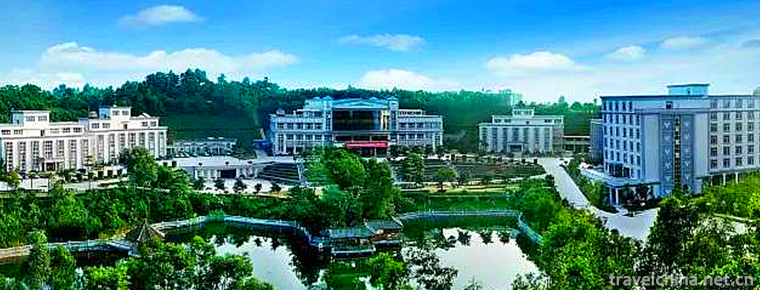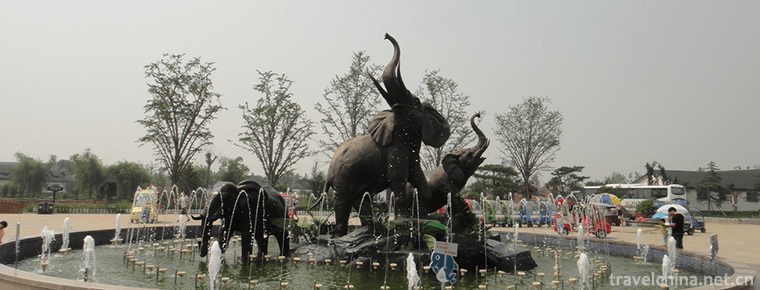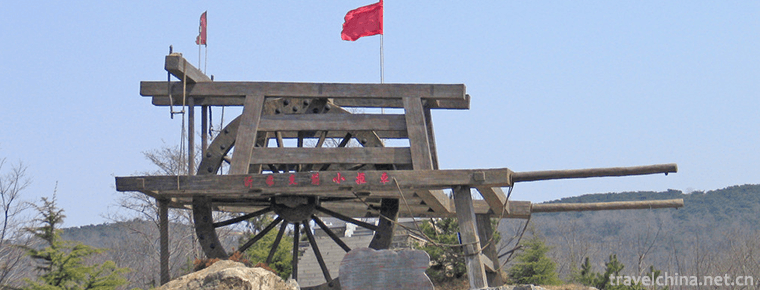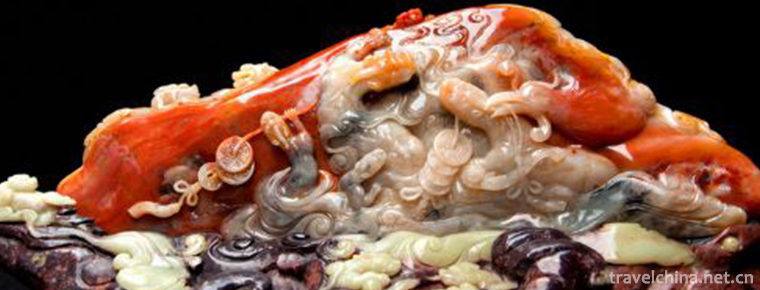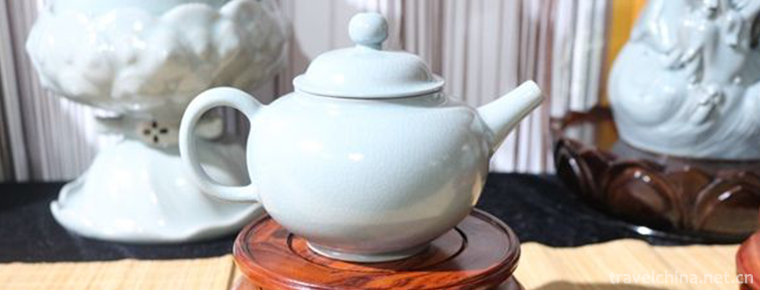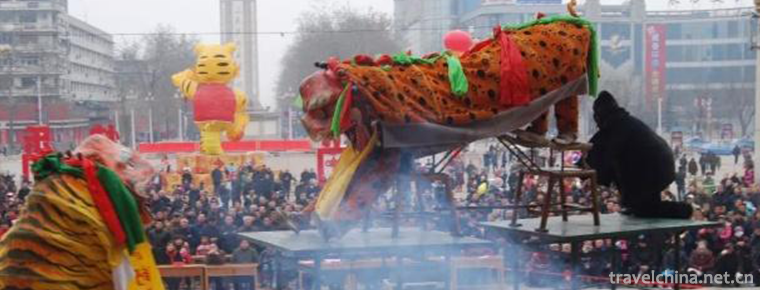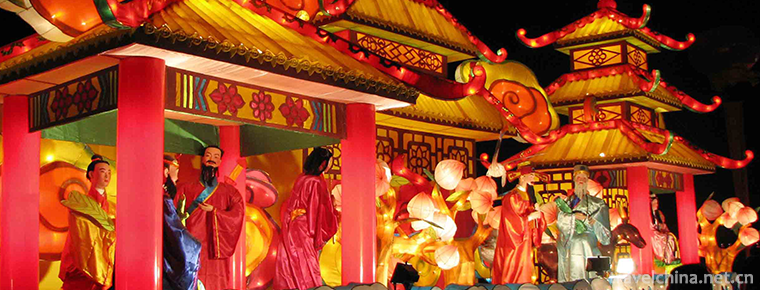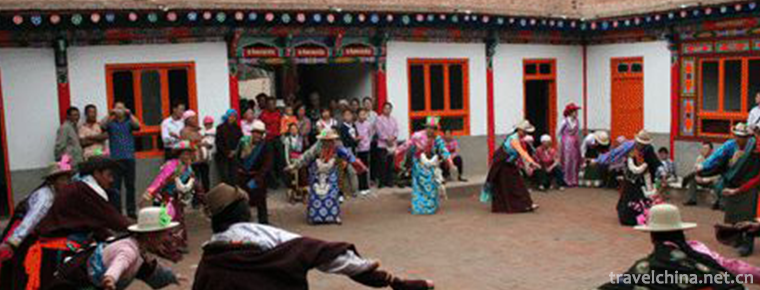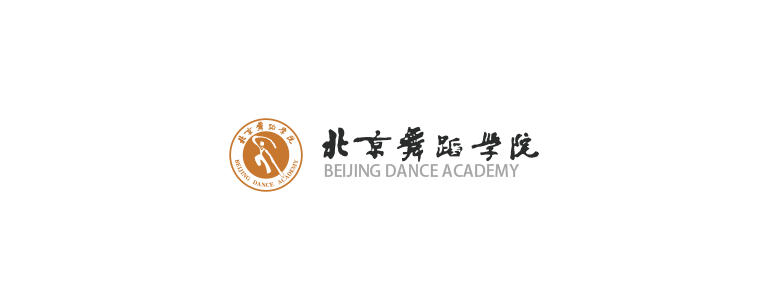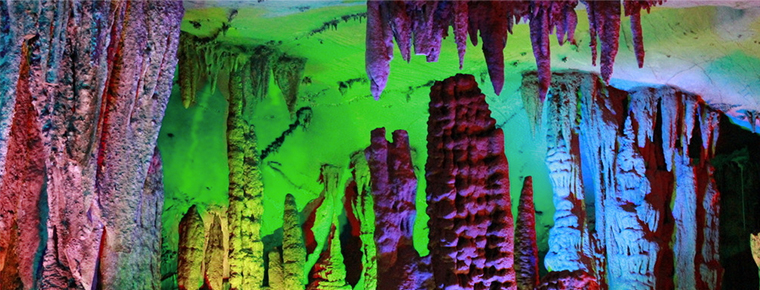Taoist Music of Xuanmiaoguan in Suzhou
Taoist Music of Xuanmiaoguan in Suzhou
The Taoist music of Suzhou, represented by the Taoist music of Xuanmiaoguan, belongs to the Zhengyi Taoist music, and is an integral art with the performing process of Zhai Yin Fa. It sings different prescribed music according to the needs of legal content, so as to create different atmosphere for the altar. It includes instrumental music and vocal music. Taoist music in Suzhou has a long history and is of cultural and historical witness value. Its complete structure, strong contrast, diverse and rich expression, and the national, typical and unified style of musical vocabulary have high artistic value.
On May 20, 2006, Xuanmiaoguan Taoist music in Suzhou was approved by the State Council and listed in the first batch of national intangible cultural heritage list.
historical origin
Taoist music in Suzhou can be traced back to the Western Jin Dynasty and belongs to the Zhengyi School. It inherited the ancient tradition of "witch singing and dancing deity, praying God with words", absorbed the music of imperial temple ceremonies, sacrificial rites, etc. It was also influenced by the culture of Wu, such as hall name music, Jiangnan silk bamboo, Kunqu opera, Wu songs, and formed a unique style, which was welcomed by the masses, and the activities were very prosperous.
The book Zhai Tian compiled by Shi Liangsheng in the late Ming and early Qing Dynasties and Jun Tian Miao Yue re-edited by Cao Xisheng, a Taoist priest in Jiaqing, are still the norms of mysterious Taoist music. There have been many famous musicians in Suzhou. They are good at melody, composing music, playing musical instruments, or singing classical rhymes. They have great influence in Taoist music circles.
At the end of the Qing Dynasty and the beginning of the Republic of China, Taoism in Suzhou tended to decline. Some of the mysterious palaces began to rent out, and some Taoists changed their professions to make a living. However, Taoist music still had a wide and deep influence on the public.
artistic characteristics
classification
Suzhou Taoist music is rooted in the fertile soil of Wu culture. It has not only the common characteristics of Taoist music, but also the distinct local characteristics. Taoist music in Suzhou consists of instrumental music and vocal music. The instrumental music mainly includes flute, drum section and a suite composed of the two. The playing methods include "sitting" and "playing music". Vocal music is the rhyme of Taoism, with melody of "rhyme tune", including "praise", "eulogy", "cun", "instruction", "mantra" and "symbol" and other forms.
As the first Taoist Temple concept in Suzhou, the mysterious concept is also the center of Taoist music study and performance in Suzhou. The Taoist priests in Guannei are especially famous for their "literary classes" in Taoist music. On the one hand, the formation of its artistic system benefited from the court art of the Southern Tang Dynasty (Dujinling) and the Southern Song Dynasty (Dulin'an), which gradually gave it the color of court music. On the other hand, it can integrate the local language and folk music. Under the nourishment of Wu culture, there are many achievements in both compilation and performance, which show the distinct local music characteristics.
Development
In the spread and development of Taoist music in Suzhou, it mainly absorbed the advantages of traditional folk music "Tang Name", and "Tang Name" also learned from Taoist music and promoted each other. Silk and bamboo, Kunqu Opera, Wu Song and Suzhou Tan Juan also have a profound impact on Taoist music in Suzhou, mainly in the use of musical instruments, transplanted tunes and playing skills.
Suzhou Taoists belong to the orthodox school, and they always use blowing, playing, beating, writing and reading as their basic skills. Those who can write and read are called mages, and those who can blow, play and play are called harmony. Master Harmony and Men, some of them do things for their followers in the temple view, some of them have to go out to make a living on their own, take business at "tea party" every day, commonly known as "rush to respond". In order to make a living, they practiced hard day and night. They worked as hard as the past classes in the field of opera. Everyone had to learn many kinds of musical instruments. Only with a high level of singing and playing, can they be qualified to hold high positions such as "Gaogong", "Dushuang" in legal affairs, drummer and flute in music classes. This is how Taoist music in Suzhou gradually became exquisite with the hard work of generations of Taoists, entered the palace of art, and won the reputation of "Gusu Xianyue".
Significance
From the perspective of music specialty, the Silk Bamboo, Kunqu Opera, Wu Song (Wu Dialect Rhyme) and Suzhou Pingtan have a more direct and profound impact on Taoist music in Suzhou, mainly in the use of musical instruments, transplanted tunes and performance skills. Folk music such as Qingjiang Yin, , and so on are all absorbed by Taoist music. In Taoist music, "Shifan gong" advocates playing "Qupai", such as "General Decree", "Eighteen Pats", "Shuilong Yin", and so on, which is the development of Taoists from the traditional music "hall name" of Suzhou. Up to now, Taoists in Suzhou can generally play together with the folk "hall name".
Although Kunqu Opera was born much later than Taoist music, the elegance of its tone and rhetoric are rare in local operas. Taoist music and Kunqu opera have a lot in common in playing and singing. They can be said to absorb and influence each other.
In the line tunes of praise, praise and snuggle, the use of folk songs (Wu tune) rhyme is a major feature of Taoist music in Suzhou. For example, in singing the same song, Suzhou and Shanghai are different. The singing cuckoo of Suzhou has a strong rhythm of Wu Song (Wu Qiang) and becomes Suzhou Qiang. So far, Taoist practitioners in Suzhou are all local people.
Other folk music, such as Suzhou Pingtan, folk wedding and funeral Festival music, have many places for Taoist music to learn from. For example, drawing lessons from the characteristics of three-stringed playing in Suzhou's performance evaluation, the solo technique of big drum has been developed from "ten drums", and the contents of long-pointed blowing and the wind instruments of Sheng and Xiao have been infiltrated into folk music. Taoist music is accompanied by decorative tones and flower tunes, and is the result of absorbing folk music. Taoist priests in offering incense, stepping, crossing the altar, worship, although there are various rules of discipline, but the master monk in many movements with flexibility, a moment of rapid rotation, high-pitched song, a moment of slow light clouds, low-speed euphemism, which requires accompaniers to coordinate action with decorative tones, flowers, acceleration.
Inheritance Significance
Suzhou Taoist music has a long history and high historical value. It has complete structure, strong contrast, rich expression, high artistic value, and has a wide impact on social life. The Taoist music in Suzhou has been created by its predecessors and has developed into a popular art form. It not only has strong local folk music characteristics, but also differs from other local Taoist style. Its flexible handling of music application, unique drum solo, tendentious guiding role of three-string solo, one song and four blows, etc. in the ritual activities, all have their own innovations, which have left a deep impression on people.
Taoist music in Suzhou inherits the tradition of court music, while the music still retains the use of "Gongchi" score, which has the unique charm of classical religion and folk music, making the music simple and elegant. Music in religious activities is shown as entertaining gods, the melody stretches slowly, gently and deeply, showing our Taoist religious beliefs and yearning for the quiet realm of nihility.
As Professor Yu Shangqing of the Chinese Dance Art Research Association said in his book The Art Collection of Taoism in Suzhou, the orderly music of Taoism music in Suzhou before the law affair ended with the end of the law affair. During the law affair, there were songs and dances, including solo, chorus, solo and ensemble. The integrity of the music structure, the contrast of strength and weakness, the diversity and richness of expression, the nationality, typicality and unity of the vocabulary style of music have all achieved a high degree of artistic achievement. "
In 1990, the Suzhou Taoist Music Troupe was formally established. Over the past ten years, the orchestra has been invited to perform in Britain, Belgium, Singapore, Macao, Taiwan and other places for many times. It has also been in Beijing for the second time to participate in the national Buddhist and Taoist music concert. Gusu Xianyue's distinctive regional, folk and unique performance style not only overwhelmed the audience at home and abroad, but also won high praise from the music and cultural professionals.
With the enlargement of Gusu Xianle's influence, Mysterious View has included it in the daily external performances. This artistic feast not only enriches the tourism connotation of the Millennium Taoist View, but also provides tourists from all over the world with an opportunity to appreciate and experience Chinese Taoist art. With the reform and opening up and the increase of cultural exchanges with foreign countries, the Xuanmiaoguan Music in Suzhou has performed abroad many times and won high praise.
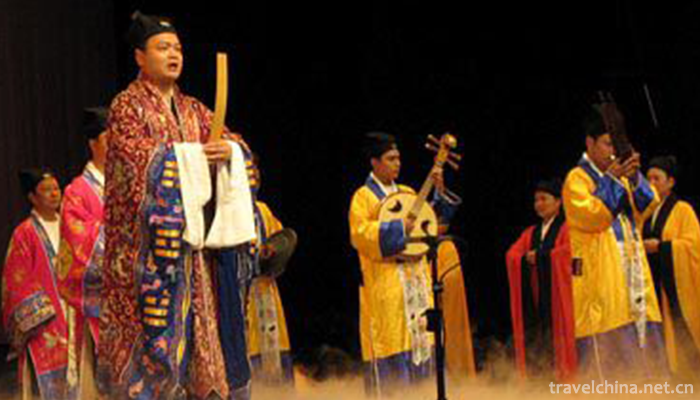
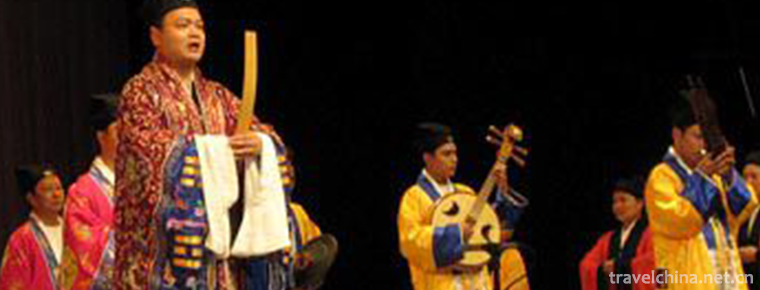
Taoist Music of Xuanmiaoguan in Suzhou
-
Jingming Hot Spring Resort
Jingming Hot Spring Resort is the largest resort in China. It is located in Jingxi Garden Town, Jiexi County, Jieyang City, Guangdong Province. It is built by Shenzhen Anyuan Investment Group Co., Ltd
Views: 356 Time 2018-12-22 -
Linyi Animal and Botanical Garden
Linyi Animal and Botanical Garden is a national AAAA-level tourist attraction , located at the core of Linyi Economic and Technological Development Zone, Shandong Province
Views: 250 Time 2018-12-22 -
Meng Lianggu Tourist Area
Meng Lianggu Tourist Area is located at the junction of Mengyin County and Yinan County, Linyi City, Shandong Province. It belongs to the Mengshan Mountains System. It is said that Meng Liangzeng, a g
Views: 313 Time 2019-02-07 -
Eight treasures fragrant glutinous rice
Babao Xiangnuo is a famous dish in Zhejiang Province. It is cooked with glutinous rice as its main ingredient. It has the characteristics of soft glutinous rice and fragrant teeth.
Views: 241 Time 2019-03-26 -
Qingtian Stone Carving
Qingtian stone carving originated in the period of "Kanze Culture" 5000 years ago. During the Tang and Song Dynasties, there were breakthroughs in creative themes and techniques. During the
Views: 165 Time 2019-06-11 -
Firing Techniques of Ru Porcelain
On May 23, 2011, the firing technique of Ru Porcelain was approved by the State Council of the People's Republic of China and listed in the third batch of national intangible cultural heritage, the he
Views: 127 Time 2019-06-11 -
Tiger dance shua laohu
Tiger dance, also known as "playing tiger" ("playing" Jiaozuo dialect refers to "playing" and "performing"), is said to have appeared in the Western Han Dynasty
Views: 237 Time 2019-06-15 -
The Lantern Festival
Lantern Festival, also known as the Lantern Festival, the Little January Festival, the Lantern Festival or the Lantern Festival, is one of the traditional festivals in China. The first month is the fi
Views: 350 Time 2019-07-16 -
Zerou
Zerou (Shangyu Zerou), also known as Ashze, is a Tibetan folk dance in Guide County, Qinghai Province. Especially "Shangyu (Chinese: lower row) is soft" is the most important. They often per
Views: 452 Time 2019-07-16 -
Beijing Dancing Academy
Beijing Dance Academy is a full-time ordinary college with the main task of training high-quality dance talents, high-level dance theory research and creation of works. The school, formerly Beijing Da
Views: 316 Time 2019-09-06 -
Longtan Karst Cave Scenic Spot
Longtan Karst Cave Scenic Area is located at the foot of longcuban mountain, Miyi Baima Town, Panzhihua City, Sichuan Province, with an altitude of 1500 meters. It is a provincial-level scenic spot and a national AA level tourist area.
Views: 131 Time 2020-10-15 -
Education in Panzhihua
By the end of 2018, Panzhihua had 2 ordinary colleges and universities, 56 ordinary secondary schools, 7 secondary professional schools, 60 primary schools and 194 kindergartens. There are 26617 students in Colleges and universities, 72372 students in secondary schools
Views: 341 Time 2020-12-14
